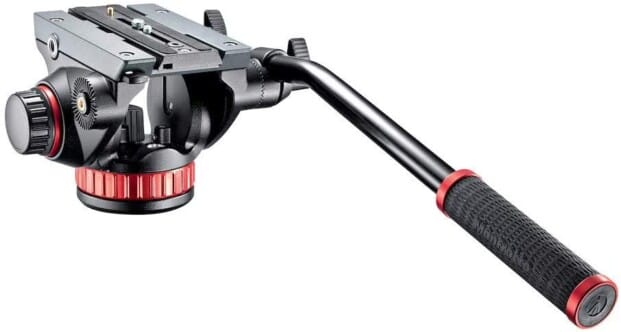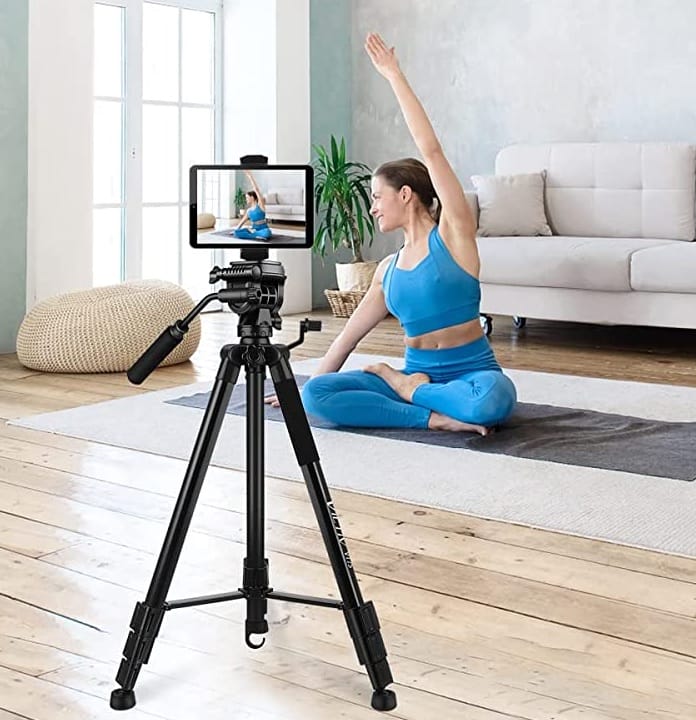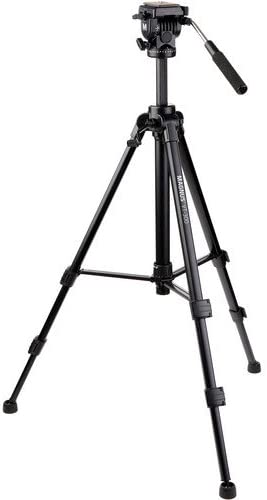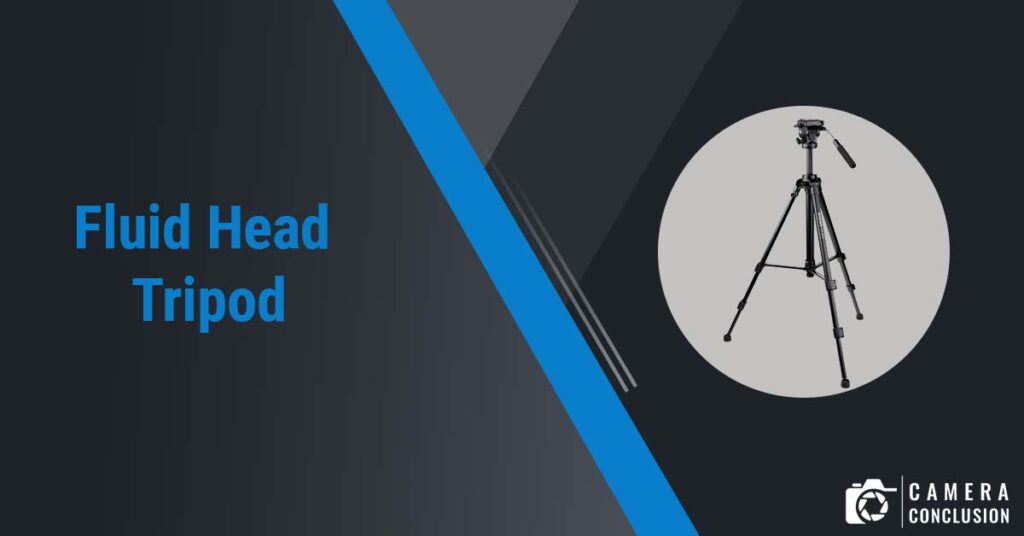Index
A fluid head tripod is a type of tripod that is designed for smooth and precise movement of the camera or other equipment while it is supported on the tripod. It has a special type of head that is called a “fluid head”. A fluid head allows for smooth panning and tilting of the camera and often provides more precise control over the movement than a traditional tripod head. This is particularly useful for video work or when you want to follow moving subjects.
The fluid head is typically filled with a special type of oil or gel that helps to create a smooth and consistent movement of the camera as it is panned or tilted. it also have a built-in system to control the resistance or dampening of the movement, which can be adjusted depending on the type of shot you are trying to achieve.
It is a better choice when compared to a standard tripod because it allows the user to get very smooth and precise movements while panning or tilting the camera, which is important in video production, live streaming and other types of applications.

Features of true fluid heads?
- Smooth and consistent movement: A true fluid head is filled with a special oil or gel that helps to create a smooth and consistent movement of the camera as it is panned or tilted.
- Adjustable resistance or dampening: Some true fluid heads have a built-in system to control the resistance or dampening of the movement, which can be adjusted depending on the type of shot you are trying to achieve.
- Pan and tilt locking: True fluid heads usually have separate locks for panning and tilting to provide more precise control over the movement of the camera.
- Counterbalance: True fluid head usually have a counterbalance mechanism that helps to keep the camera level when making pan and tilt movements.
- Load capacity: True fluid heads have a higher load capacity compared to other types of tripods, which can support heavy cameras and lenses.
- Ergonomic design: They are often designed with ergonomics in mind, with easy to use controls that are easily accessible.
- Precision: They provide the most precise control over the movement of the camera, that’s why they are used in professional video production, live streaming, and other types of applications.
- Durable: True fluid heads are built to last, with robust construction, and high-quality materials that can withstand frequent use and heavy loads.
How do you attach a Fluid head to a tripod?
Attaching a fluid head to a tripod is generally the same process as attaching any other type of tripod head. Here are the steps to follow:
- First, loosen the quick-release plate or head of the tripod.
- Position the fluid head so that the mounting plate is facing upwards and align it with the center of the tripod head.
- Carefully screw the fluid head onto the tripod mount, making sure that it is secure and level.
- Tighten the quick-release plate or head of the tripod to hold the fluid head in place.
- Test the fluid head to make sure it is securely attached and not wiggling.

It’s important to make sure that the fluid head is securely attached to the tripod and that the tripod is stable to prevent any accidents or damage to your equipment. It’s also important to follow the manufacturer’s instructions for your specific fluid head and tripod to ensure proper attachment and use.
How does a Fluid video head work?
A fluid video head works by using a special type of oil or gel that is sealed inside the head to create smooth and consistent movement of the camera as it is panned or tilted. The fluid inside the head helps to absorb any small movements or vibrations, allowing for a smooth and steady shot.
Fluid video heads typically have separate pan and tilt mechanisms that can be controlled separately. The pan mechanism allows for horizontal movement of the camera, while the tilt mechanism allows for vertical movement. Each mechanism usually has a locking system that can be engaged to keep the camera in a fixed position.

The head also has a counterbalance mechanism that helps to keep the camera level when making pan and tilt movements. This is particularly important when using heavy cameras or lenses.
Most fluid video heads also have a built-in system to control the resistance or dampening of the movement, which can be adjusted to suit the type of shot you are trying to achieve. This means that you can make the movement as smooth or as stiff as you like.
The fluid video head is typically attached to a tripod which allows you to work at different heights, and also provide stability to the camera setup.
In summary, fluid video head works by providing smooth and consistent movement of the camera by using a special type of oil or gel, it also has separate pan and tilt mechanism, a locking system, a counterbalance mechanism, and adjustable resistance/damping to achieve different types of shots.
Why do you need to invest in Fluid-head tripods?
Investing in a fluid-head tripod can be beneficial for several reasons:
- Smooth and consistent movement: A fluid head provides smooth and consistent movement of the camera, which is particularly useful for video work or when you want to follow moving subjects. This can help to create a more professional-looking final product.
- Precise control: A fluid head allows for more precise control over the movement of the camera, which can be especially important when trying to achieve a specific shot or when working with a heavy camera or lens.
- Versatility: Fluid-head tripods can be used for a wide range of photography and videography applications, from nature and landscape to sports and events.
- Durability: Fluid-head tripods are built to last, with robust construction and high-quality materials. They can withstand frequent use and heavy loads, making them a good investment for professional photographers and videographers.
- Ergonomic design: They are often designed with ergonomics in mind, with easy to use controls that are easily accessible.
- Investment in quality: Investing in a fluid-head tripod is a way of investing in the quality of your work. It will allow you to achieve better shots and make the final product look more professional.

In summary, investing in a fluid-head tripod can provide smooth, consistent, and precise camera movement, which is particularly useful for video work and when trying to achieve a specific shot. It also offers versatility, durability, ergonomic design, and an investment in the quality of your work.
